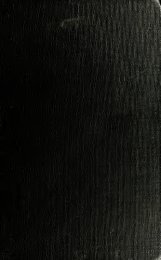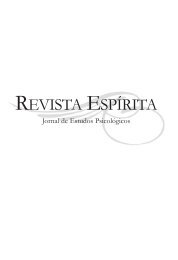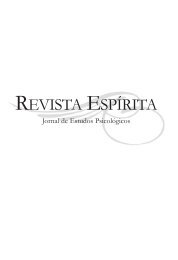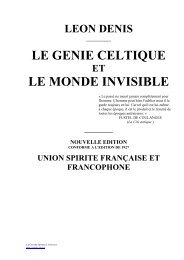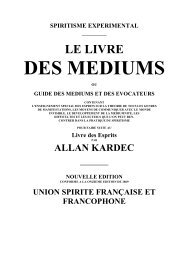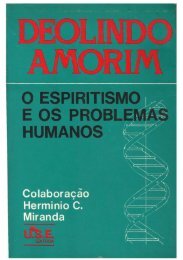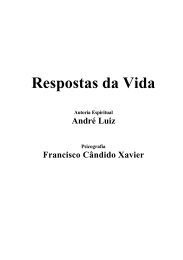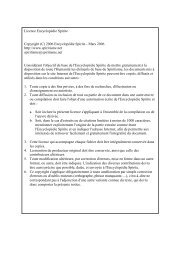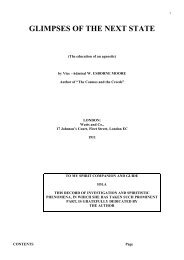'Twixt two worlds : a narrative of the life and work of William Eglinton
'Twixt two worlds : a narrative of the life and work of William Eglinton
'Twixt two worlds : a narrative of the life and work of William Eglinton
You also want an ePaper? Increase the reach of your titles
YUMPU automatically turns print PDFs into web optimized ePapers that Google loves.
Drawings <strong>and</strong> Writings Produced by Abrormal Means. Sj<br />
<strong>the</strong> likeness <strong>of</strong> <strong>the</strong> cast, though about a third smaller, strikes every one who sees it. It<br />
is not like <strong>the</strong> conventional h<strong>and</strong>s <strong>of</strong> statues. It is a purely natural, anatomical h<strong>and</strong>, with<br />
every bone <strong>and</strong> tendon, <strong>and</strong> <strong>the</strong> finest skin marks distinctly visible. It is <strong>the</strong> h<strong>and</strong> I knew so<br />
well in its mortal <strong>life</strong>, <strong>and</strong> which I have so <strong>of</strong>ten seen <strong>and</strong> felt since when materialised.<br />
The little mould was given to <strong>the</strong> mo<strong>the</strong>r, who had it cast, <strong>and</strong> she has no doubt that<br />
it is <strong>the</strong> h<strong>and</strong> <strong>of</strong> her child. I know as absolutely as I can know any fact, that <strong>the</strong> cast upon<br />
my mantel is from a mould formed upon <strong>the</strong> materialised spirit-h<strong>and</strong> <strong>of</strong> my daughter. The<br />
whole process was in my h<strong>and</strong>s, <strong>and</strong> <strong>the</strong>re could not be more stringent test conditions. Had<br />
<strong>the</strong> mould been formed upon any human h<strong>and</strong>, it could never have been removed. The circumference<br />
at <strong>the</strong> wrist is an inch <strong>and</strong> a half less than <strong>the</strong> smallest compass <strong>of</strong> <strong>the</strong> palm <strong>and</strong><br />
thumb. To disengage a h<strong>and</strong> from such a mould would break it into many pieces. The only<br />
explanation that can be given, or that suits <strong>the</strong> case, is that <strong>the</strong> h<strong>and</strong> which formed <strong>the</strong> mould<br />
must have dissolved, or dematerialised, to get out <strong>of</strong> it.<br />
On <strong>the</strong> mantel, under a second glass shade, is ano<strong>the</strong>r cast <strong>of</strong> a h<strong>and</strong>, entirely different.<br />
It came from a mould procured under precisely <strong>the</strong> same conditions at a subsequent seance.<br />
It is <strong>the</strong> broad, square h<strong>and</strong> <strong>of</strong> a man, which I think I recognise but cannot identify with <strong>the</strong><br />
same certainty as in <strong>the</strong> case <strong>of</strong> <strong>the</strong> o<strong>the</strong>r. It is like my fa<strong>the</strong>r's h<strong>and</strong>. I inherit <strong>the</strong> form<br />
<strong>of</strong> mine from my mo<strong>the</strong>r. But <strong>the</strong>re it is, a solid human h<strong>and</strong>, but most certainly not a cast<br />
from <strong>the</strong> h<strong>and</strong> <strong>of</strong> any one living in <strong>the</strong> flesh. The curved lines on <strong>the</strong> inside <strong>of</strong> <strong>the</strong> fingers<br />
<strong>and</strong> <strong>the</strong> palm are very clearly given. There are hundreds <strong>of</strong> skilled Italian moulders in<br />
plaster <strong>of</strong> Paris in London, but no one <strong>of</strong> <strong>the</strong>m can make such a cast <strong>of</strong> a h<strong>and</strong> as ei<strong>the</strong>r <strong>of</strong><br />
<strong>the</strong>se, <strong>and</strong> no one can imagine how <strong>the</strong>se could be done, except in <strong>the</strong> way <strong>the</strong>y were done.<br />
There have been speculations about <strong>the</strong> use <strong>of</strong> some elastic substance in making <strong>the</strong><br />
moulds, like india-rubber or glue : but <strong>the</strong>re is no known method <strong>of</strong> <strong>work</strong>ing ei<strong>the</strong>r—besides,<br />
<strong>the</strong> moulds in which <strong>the</strong>se h<strong>and</strong>s were cast were solid paraffin, which I had melted, <strong>and</strong> were<br />
floating in <strong>the</strong> pail <strong>of</strong> water I had placed to cool <strong>the</strong> paraffin. The difficulty was to produce<br />
<strong>the</strong> mould, <strong>and</strong> remove <strong>the</strong> h<strong>and</strong> when <strong>the</strong> paraffin was hard <strong>and</strong> brittle. Only one way to<br />
do that is conceivable, which is <strong>the</strong> partial, if not complete, dematerialisation, or dissolution,<br />
<strong>of</strong> <strong>the</strong> h<strong>and</strong> enclosed within <strong>the</strong> hard, inflexible mould.<br />
In <strong>the</strong> second, as in <strong>the</strong> first experiment, I found <strong>two</strong> moulds floating in <strong>the</strong> pail <strong>of</strong> water.<br />
When I had poured <strong>the</strong> liquid plaster <strong>of</strong> Paris into <strong>the</strong> smaller mould, let it harden, <strong>and</strong> <strong>the</strong>n<br />
melted <strong>of</strong>f <strong>the</strong> paraffin, I found a curiously deformed little foot. The size is that <strong>of</strong> a child<br />
six months old, but it is cramped, distorted, deformed, as I have never seen in a living child.<br />
Yet <strong>the</strong>re it is, in every bone <strong>and</strong> tendon, <strong>and</strong> <strong>the</strong> five cramped little toes, a child's foot. It<br />
is not pretty as an object <strong>of</strong> art, but as a test it is better than <strong>the</strong> most perfectly formed<br />
foot or h<strong>and</strong> could be.<br />
This ended our experiments with moulds <strong>and</strong> casts. The results are very solid facts<br />
which will trouble any sceptic to explain. When I show my plaster h<strong>and</strong>s to anyone, <strong>the</strong> more<br />
he knows <strong>of</strong> such <strong>work</strong>, <strong>and</strong> <strong>the</strong> more clever <strong>and</strong> ingenious he is, <strong>the</strong> more he is puzzled to<br />
account for <strong>the</strong>m. Were I able to pay a thous<strong>and</strong> pounds, I would <strong>of</strong>fer that reward to any<br />
one who would show me how such h<strong>and</strong>s could be produced in any way but that in which<br />
<strong>the</strong>y were produced, viz., from moulds in one piece, from <strong>the</strong> h<strong>and</strong>s <strong>of</strong> materialised spirits.



